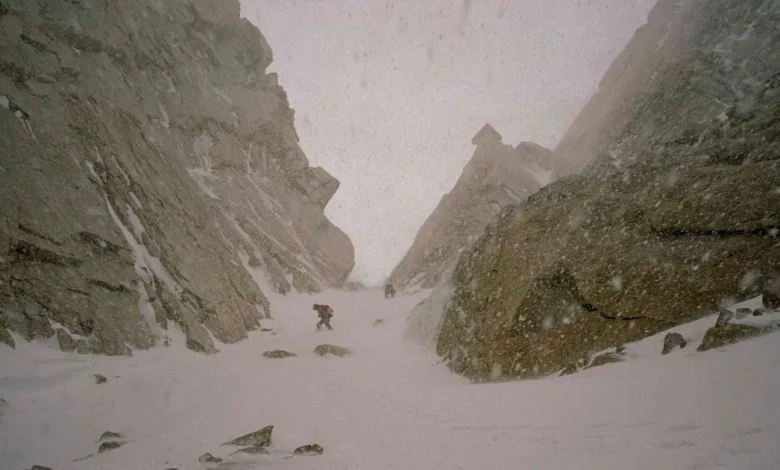Weather Experts Issue Warning Today as Glacier National Park Will See Extreme Snow, up to 18 Inches

It comes as a rare snowfall, given that the park was once home to hundreds of glaciers. Climate change has now reduced them to just a few dozen.
Going-To-The-Sun Road is flanked by towering alpines and monstrous cliffs dusted with tawny-colored rocks; it’s the only road that visitors need to take to cross Glacier National Park. Today, however, the road has been padlocked between the area spanning Avalanche Creek and Logan Pass. The reason is a tempest of snow expected between Monday, November 24, and Tuesday, according to a “winter storm warning” issued by the National Weather Service in Fairbanks, Alaska.
Man standing in a national park in front of a glacier filled with melting chunks of ice (Representative Cover Image Source: Getty Images | VisualStories)
The warning was issued mainly for the White Mountains and high terrain south of the Yukon River, including the Glacier National Park, hailed typically as the Crown of the Continent, laced with this meandering curve of the 50-mile road. The weather report suggests that wind gusts up to 60 miles per hour are expected to lash the region, along with flurries of blowing snow, along the Great Continental Divide. Snowpack coupled with windy gusts could dramatically reduce the visibility, which is why drivers are urged to avoid travelling across this road.
Not just rare, this snowfall is also regarded as one of the heaviest in the past few decades. According to a National Geographic documentary, the park once had hundreds of glaciers that bubbled and flowed through U-shaped glacial valleys, down the mountain valleys, and into the morass of over 700 lakes. Today, a scanty number of glaciers can be observed, rippling lazily and spilling their icy waters upon the park’s famous rainbow rocks and Lake McDonald, where visitors gather to ride in boats and gaze at the night stars.
Snowfall in Going To The Sun Road in Glacier National Park (Representative Image Source: Getty Images | Susan Ruggles)
Grizzly bears, moose, and bighorn sheep scramble down the park’s valleys and slopes to manage the changing environment according to their food and habitat needs. Amidst all this, the snowfall comes as a blessing in disguise. Everyone is happy to see the park become decorated with the cool, white bounty, except that this bounty is a bit slippery. The glassy smooth carpets of accumulated snow could easily throw a car off balance, posing dangerous scenarios for the passengers.
The report says that the park expects up to 18 inches of snow in the Great Falls. The peculiar weather system of the park can provoke showers of snowflakes along mountain passes with rain or snow at lower levels, between Monday morning and Tuesday morning. The snowfall is likely to be the heaviest between Monday morning and Monday evening. By Monday night, it will probably subside, giving way to a sunny Tuesday. The freezing rain could create “icy spots” on pavements, especially bridges and elevated surfaces, as well as ferocious gusts of wind, and areas of blowing snow over mountain passes.
A man using a torch to climb the mountains at night. (Representative Cover Image Source: Pexels | Marek Piwnicki)
At Marias Pass, the snow total could pile up to 5 to 10 inches, with other affected regions including the Big Belt, Bridger, Castle, Little Belt, and Highwood Mountains, along with the Bear’s Paw and Southern Rocky Mountain Front. “Drivers are urged to slow down, use caution, and check travel conditions before leaving,” the weather service cautions. The Montana Department of Transportation further advised motorists to call 511 or visit the MDT Road Report website for real-time updates. “Conditions may be hazardous along mountain roadways, so take extra caution when traveling over passes. Otherwise, snow may spill into the valleys, with rain for the plains,” the NWS wrote on X.
More on Green Matters
Mount Rainier National Park Announces Trail Closure — but Not Because Winter Is Approaching
Melting Ice on the Rocky Mountains Reveals 6000-Year-Old Secret About Earth’s Climate History
Researchers Use 3,000 Cameras To Capture These Elusive Animals — And It Worked Out





